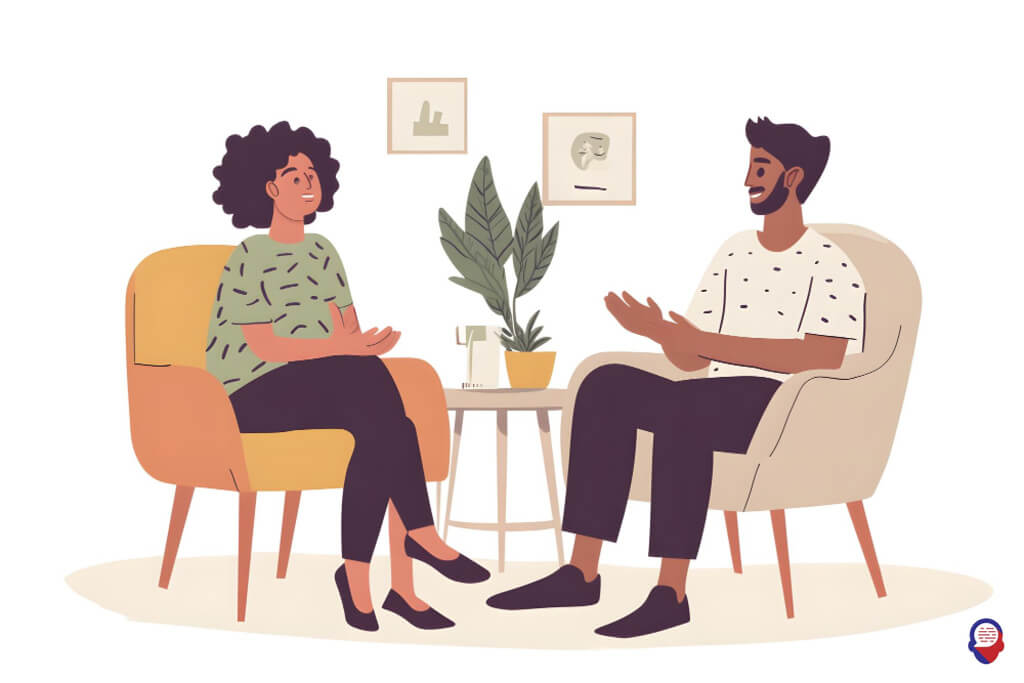How Families Heal Through Better Communication Therapy
Family life can feel like a complex dance. Sometimes the rhythm is perfect, with everyone moving in sync, a beautiful expression of harmony and connection. Other times, someone steps on a toe, the music falters, and the whole performance descends into a clumsy, frustrating mess. We often blame the individual dancer, the one who seems out of step, but what if the problem isn’t the person, but the pattern of the dance itself? This is the revolutionary idea at the heart of Communication Family Therapy, an approach that looks beyond individual blame to heal the entire family system.
It’s a perspective that changes everything. It suggests that the arguments, the silent treatments, the misunderstandings, and even the troubling behaviours of a child aren’t just isolated incidents. They are symptoms, signals pointing to deeper, often invisible, patterns of communication that have become stuck. This therapy provides a map to understand these patterns and, more importantly, a guide to change them, helping families find their rhythm once again.

What Exactly Is Communication Family Therapy?
It is a type of psychotherapy that focuses on improving the interactions and communication patterns within a family unit. Instead of delving deep into the past of any single individual, this approach concentrates on the "here and now" of how family members relate to one another, believing that changing the communication process is the key to resolving conflict and distress.
This model emerged from the groundbreaking work of pioneers at the Mental Research Institute (MRI) in Palo Alto, California, during the mid-20th century. Thinkers like Gregory Bateson, Don Jackson, and the iconic Virginia Satir shifted the focus of therapy away from the individual’s inner world and onto the family as an interconnected system. They saw the family not as a collection of separate people, but as a whole entity, where the actions of one member invariably affect all the others.
The core belief is that a problem or symptom displayed by one person, often a child, is frequently a manifestation of a dysfunctional family system. The "identified patient," as they are sometimes called, may simply be the one carrying the stress for the entire family. Therefore, healing involves not "fixing" that person, but healing the dynamics of the whole family. It’s about upgrading the family’s entire communication operating system.

How Do Communication Patterns Become Unhealthy?
Unhealthy communication patterns develop from a combination of unspoken family rules, learned defensive responses, and a failure to communicate clearly and directly, especially during times of stress. These patterns often become so ingrained that family members are completely unaware of them, repeating the same frustrating cycles without understanding why.
Think of these patterns as well-worn paths in a forest. At first, they were just one way to get from point A to point B. But over years of repeated use, they become deep ruts, making it almost impossible to choose a different route. Communication Family Therapy helps the family see these ruts and gives them the tools to forge new, healthier paths.

What Are “Communication Stances”?
These are predictable, defensive roles that people unconsciously adopt to protect their self-esteem when they feel threatened or stressed in a conversation. Pioneered by Virginia Satir, these stances are survival mechanisms that sacrifice open, honest communication for a feeling of safety.
Satir identified four primary dysfunctional communication stances that people fall into. Each one is an attempt to navigate a difficult interaction, but they all ultimately create more distance and misunderstanding. They are the Placater, the Blamer, the Super-Reasonable, and the Irrelevant. Understanding them is often the first step for families to see their own patterns more clearly.
The Placater’s stance is one of agreement and apology. This person will do anything to avoid conflict, often at the expense of their own needs and feelings. They say "yes" when they mean "no," take responsibility for things that aren’t their fault, and constantly seek approval. Their words are appeasing, but their body language often communicates their deep sense of worthlessness or helplessness. Internally, the Placater feels like a victim, believing they have no value unless they are pleasing others.
The Blamer is the polar opposite. This person avoids their own feelings of vulnerability by finding fault in others. They are masters of accusation, criticism, and control. The Blamer points the finger, uses absolute language like "you always" or "you never," and acts like a dictator to feel powerful. Beneath this tough exterior, however, the Blamer is often masking deep-seated feelings of loneliness, disappointment, and fear of not being valued.
The Super-Reasonable, or the Computer, is the stance of pure logic and intellect, completely detached from emotion. This person responds to conflict with data, facts, and lengthy, dispassionate explanations. They appear calm, cool, and collected, but they are using intellect to wall off their feelings. They fear the messiness of emotion, both their own and others’, and so they retreat into a world of objective analysis. Inside, the Super-Reasonable person feels profoundly vulnerable and isolated.
Finally, the Irrelevant stance, or the Distractor, is about derailing communication entirely. When things get tense, this person will change the subject, make a joke, or do something completely random to pull focus away from the conflict. They seem flighty and disconnected because their goal is to ignore the threat altogether. The chaos they create on the outside is a direct reflection of the panic and sense of not belonging they feel on the inside.

What Are “Double Binds”?
A double bind is a distressing no-win communication dilemma where an individual receives two or more conflicting messages, and one message negates the other. The person is trapped because they cannot follow both directives, and they are also prevented from commenting on the contradiction.
This concept, developed by Gregory Bateson and his colleagues, is more than just a mixed message. It’s a toxic pattern that can create intense anxiety and confusion. A classic example is a parent who verbally says "I love you" but physically stiffens or pulls away when their child tries to hug them. The child receives conflicting messages, one of affection through words and one of rejection through action.
The crucial, damaging element of the double bind is the unspoken rule that the victim cannot point out the contradiction. The child cannot say, "You say you love me, but you act like you don’t want me near you." To do so would be seen as defiant or disrespectful, potentially leading to punishment or further withdrawal of affection. They are damned if they respond to the words and damned if they respond to the action, leaving them feeling confused, powerless, and crazy.

How Do Unspoken Family Rules Cause Problems?
Unspoken family rules cause problems by creating a rigid, invisible structure that dictates which feelings, topics, and behaviours are acceptable and which are forbidden. These hidden mandates often stifle emotional expression, prevent authentic connection, and force family members into inauthentic roles.
Every family has rules, both spoken and unspoken. Spoken rules might be "finish your homework before you watch TV." Unspoken rules are more subtle and powerful, like "don’t ever talk about money," "never show anger," or "dad’s emotional state is everyone’s responsibility." These rules are learned through observation, not instruction. A child learns not to cry by seeing a parent react with discomfort or dismissal whenever they show sadness.
These rules become dysfunctional when they demand that family members deny their genuine reality. A rule like "we are always a happy family" forces everyone to suppress feelings of sadness, anger, or disappointment. This creates a huge gap between the family’s public image and their private reality, leading to a profound sense of loneliness and dishonesty within the very unit that should be the safest. Breaking these hidden rules is often what brings a family to therapy.

What Happens During a Communication Therapy Session?
During a session, the therapist actively observes the family’s communication patterns in real time, serving as both a detective and a coach. The therapy room becomes a laboratory where the family’s typical ways of interacting are played out, identified, and gently interrupted.
The therapist pays close attention not just to the words being said, but to the entire communication dance. This includes tone of voice, body language, seating arrangements, who speaks for whom, and who gets interrupted. The goal is not to take sides or decide who is right or wrong, but to understand the process that keeps the family stuck.
The therapist’s role is active and direct. They will not simply sit back and listen passively. They will intervene to point out patterns as they happen, encouraging family members to speak for themselves, express their feelings directly, and listen to one another in new ways. It is an experiential process, focused on doing things differently right there in the room.

How Does the Therapist Help?
A therapist helps by acting as a model for healthy communication, a translator for misunderstood messages, and a director for new, more functional interactions. They create a safe environment where the family can risk being vulnerable and try out different ways of relating to one another.
One powerful technique is "family sculpting," developed by Virginia Satir. The therapist might ask a family member to physically arrange the other members in the room to represent their perception of the family’s emotional dynamics. This non-verbal exercise can reveal powerful insights about closeness, distance, power, and alliances that words could never capture. It makes the invisible dynamics visible.
Therapists also use reframing, which involves changing the conceptual or emotional viewpoint of a situation to change its meaning. For example, a teenager’s "defiance" might be reframed as a "struggle for independence." This simple shift can reduce blame and open up new possibilities for understanding and connection. The therapist essentially helps the family change the story they tell themselves about their problems.

What Is the Goal of These Sessions?
The ultimate goal is to help the family achieve congruence, where each member’s internal feelings, their spoken words, and their non-verbal behaviours are all aligned and consistent. Congruence is the healthiest communication stance, one rooted in high self-worth and genuine expression.
A congruent person can acknowledge their feelings, take responsibility for them, and communicate them clearly and respectfully. They can say, "I feel hurt when you say that," instead of blaming ("You’re so mean!") or placating ("Oh, it’s fine, I’m okay."). They can disagree without attacking and listen without becoming defensive.
When a family learns to communicate with congruence, the old dysfunctional patterns naturally fall away. Trust is rebuilt, intimacy deepens, and the family becomes a resource for its members rather than a source of stress. The identified patient no longer needs to carry the symptom for the system, because the system itself has become healthier.

Will We Just Talk About Problems?
No, the focus is not solely on problems, but equally on identifying and amplifying the family’s strengths and resources. Therapy is about building new skills and celebrating moments of successful connection, not just dissecting failures.
A skilled therapist will be on the lookout for exceptions to the problem. They might ask, "Was there ever a time this week when you felt heard by your partner? What was different about that moment?" By focusing on what works, even in small instances, the family begins to build a new narrative of competence and hope.
The process is forward-looking. While understanding past patterns is useful, the real work is in practicing new behaviours in the present. The sessions are a training ground for the family to develop the communication muscles they need to handle future challenges effectively, long after therapy has ended.

Who Can Benefit from This Type of Therapy?
Any family system that feels stuck in cycles of conflict, misunderstanding, or emotional distance can benefit enormously from this therapeutic approach. It is not reserved for families in extreme crisis, but for any group of people who want to improve their connection.
This includes traditional nuclear families with parents and children, but its principles apply much more broadly. Blended families navigating the complexities of new roles, couples struggling to communicate, adult siblings trying to manage aging parents, or any group of people bound by kinship and shared life can find value in this work.
It is particularly effective when a child or adolescent is exhibiting behavioural or emotional problems. By treating the whole family, the therapy addresses the root system dynamics that may be contributing to the child’s distress, leading to more sustainable change than individual therapy alone might achieve. It helps the family learn to support each other in a way that fosters health for everyone.

How Does This Approach Create Lasting Change?
This approach creates lasting change because it targets the fundamental rules and processes that govern the family’s interactions, rather than just addressing surface-level content. It’s the difference between repeatedly patching a leaky pipe and installing a whole new, more resilient plumbing system.
When a family only solves the immediate problem, like a disagreement over chores, they haven’t learned anything new about how to handle the next disagreement. Communication therapy gives them a new toolkit. They learn how to listen actively, speak congruently, and repair conflict constructively. These are skills that can be applied to any issue that arises in the future.
By changing the communication patterns, you change the family’s emotional climate. An environment of blame and defensiveness is transformed into one of safety, trust, and mutual respect. This new atmosphere becomes self-reinforcing, empowering the family to continue growing and adapting long after their time with the therapist is complete. The family itself becomes the agent of its own healing.
Frequently Asked Questions

How long does communication family therapy usually take? The duration of therapy varies greatly depending on the family’s specific goals and the complexity of their issues. Some families may see significant improvement in a relatively short period, perhaps 8 to 12 sessions, as they learn and implement new skills. Others with more deeply entrenched patterns may benefit from a longer-term approach, but the model is generally designed to be focused and goal-oriented rather than indefinite.

Does the whole family have to attend every session? Ideally, yes, especially in the beginning, as the therapist needs to observe the entire system in action. However, therapists are flexible. Sometimes, sessions might involve different subsystems, such as just the parents, or a parent and a child. The therapist will work with the family to determine the most productive arrangement for each session to meet the overall therapeutic goals.

Is this therapy just for families with major crises? Absolutely not. While it is highly effective for families facing significant crises, like addiction, divorce, or severe behavioural issues, it is also incredibly valuable for families who simply feel disconnected or stuck in minor, repetitive arguments. It can be a form of preventative maintenance, strengthening family bonds and improving communication before small problems become large ones.

What if one family member refuses to participate? This is a common concern, and it does not mean therapy is impossible. Even if one person is unwilling to attend, change can still happen. The therapist can work with the willing members to alter their own communication and reactions, which will, in turn, change the family dynamic. When one part of the system changes its behaviour, the rest of the system must adapt, often leading to positive shifts throughout the family.

At Counselling-uk, we understand that the challenges of family life can feel overwhelming. The patterns that hold you back are often invisible, and finding a new way forward can seem impossible. We are here to provide a safe, confidential, and professional space where you and your family can find clarity and learn to connect in healthier, more meaningful ways. You don’t have to navigate this alone. Take the first step towards a more harmonious family life by reaching out to one of our qualified therapists today. We offer support for all of life’s challenges, helping you build the relationships you deserve.




Another challenge that can arise during family therapy is unspoken rules within the family system. These rules may include expectations about behavior or ways of speaking that are not always expressed directly but are nonetheless influential on how people interact with each other. Unspoken rules can create a barrier to open communication and understanding between family members which makes it harder for a therapist to facilitate meaningful conversations. To work around this challenge, it is important for everyone involved in the therapy process to explore their underlying assumptions and beliefs about what should be said or done in certain situations so they can begin to identify any unspoken rules or expectations that might exist within their family system.
In addition, communication and family therapy can encourage individuals to take responsibility for their own actions. Through honest dialogue, people are able to come to terms with how their behaviour impacts others around them, fostering a sense of personal growth and self-awareness. This type of therapy provides an opportunity for growth as people learn how they best communicate with each other while developing healthier relationships over time.